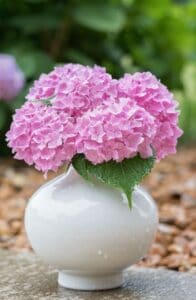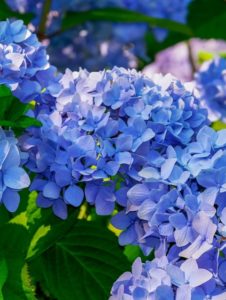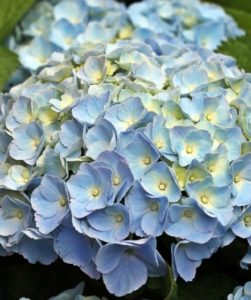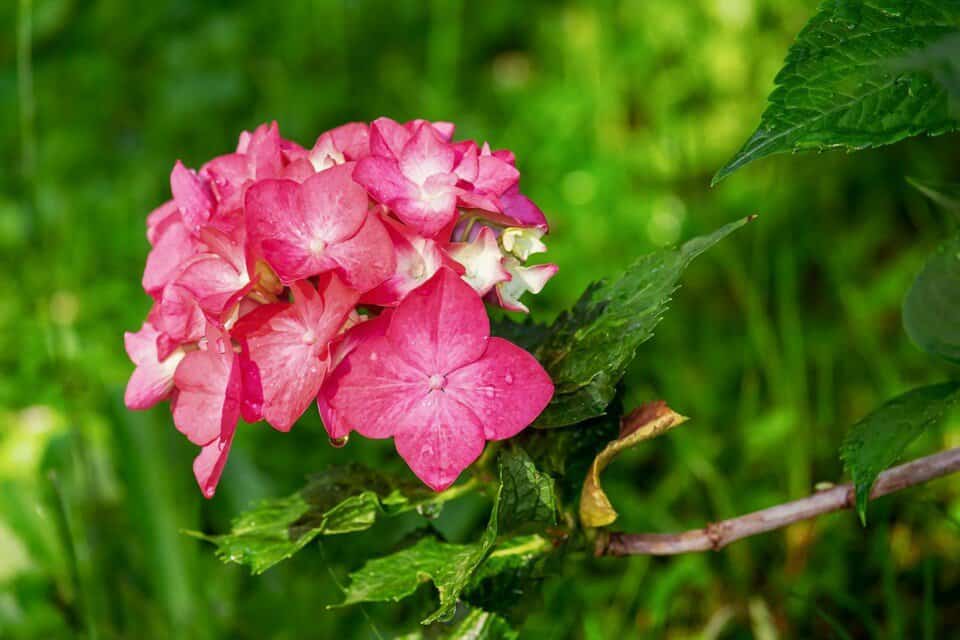Some links in the post are affiliate links and I get a commission from purchases made through some links found in the post.
Hydrangeas are a perfect addition to any garden and can make everything around them aesthetically exquisite.
Especially in the spring and summer, these shrubs are covered in huge globes of blooms with thousands of tiny flowers on them.
Although they may appear to require a lot of upkeep, hydrangeas require little care and are simple to grow in the correct environments. Since you came across this article, you must be wondering, are hydrangea annuals or perennials?
All species of Hydrangeas are perennials and can live for many years. Hydrangeas are essentially woody perennials, so their stems lack a delicate green texture. Frost usually causes the development of sensitive perennials to die back, but not woody perennials.
Therefore, if we think about it, it can be both.
If you choose the right hydrangea type that suits your location and environment then they will live and thrive for many years. However, is hydrangea annual or perennial is still a question that will be clearly discussed in this article.
What is a Hydrangea
 Hydrangeas are flowering shrubs that come in 75 different species. Those beauties are also known as hortensias. Hydrangeas are native to Asia and the Americas.
Hydrangeas are flowering shrubs that come in 75 different species. Those beauties are also known as hortensias. Hydrangeas are native to Asia and the Americas.
Eastern Asia has by far the highest species variety, particularly in China, Korea, and Japan.
From early spring through late fall, hydrangeas bloom and light up every garden and house with their huge and spectacular flowers.
Blooms are frequently added to the little flowers’ exterior or stretched in a ring.
While farmed hydrangeas have been developed and chosen to produce more of the bigger type blooms, plants in wild populations often have few and smaller flowers.
The majority of hydrangea varieties can survive in USDA zones 3 to 7, however certain varieties may survive up to zone 9.
Additionally, certain types thrive in cooler environments or even in shadows. A plant’s hardiness refers to how well it can withstand challenging growth circumstances, most notably a harsh winter.
This means that the majority of hydrangeas may survive a rather cold winter and bloom again the following season.
What Does Annual and Perennial Mean?
To find out if a hydrangea is an annual or a perennial, let’s clearly explore those two groups. Even though you might be aware of these phrases, it’s crucial to know what they represent.
Furthermore, it’s essential to realize that some plants might be perennial in certain hardiness zones but annual in others.
Plants that require hotter climates may not always do well in colder climates since they can be too harsh.
In the northern parts, a plant can only be planted as an annual, whilst in the south, it may be found as a perennial. Let’s look more closely.
Plants are considered annual if it completes all the steps of the life cycle. Generally, it means that the plant is germinated from the seed, then grows and produced the seed, and in the end, dies.
An annual plant’s ultimate objective is to generate a seed, which will allow it to procreate. Annuals will bloom all season long till their task is finished.
Deadheading up to the first frost is the greatest method for extending the bloom period. Annual blooming plants for gardens include marigolds and petunias.
A plant that survives for a 2 year period or more, is called a perennial. Typically, for the perennials, the top growth will wither in the winter and reappear in the spring.
Perennial plants have a beautiful long life when they are grown in good circumstances. There are many different types of plants in this wide category, and each one has a specific care schedule.
It’s easy to grow perennials at home. You may either layer directly in your garden or take cuttings and root them in some growth medium.
Another option for propagation is to devise perennials to increase their number. Your garden will continue to develop whether you do this in the spring or fall. Perennial plants include Heuchera, Echinacea, and Hosta.
Is Hydrangea Annual or Perennial?
 So, here is an answer to the question is hydrangea annual or perennial? All types and species of Hydrangeas are perennial plants.
So, here is an answer to the question is hydrangea annual or perennial? All types and species of Hydrangeas are perennial plants.
A hydrangea’s life cycle approximately takes more than one or two years to complete. It can even take up to 3 years to actually see the seeds produced in their blossoms.
Hydrangeas are essentially woody perennials, so their stems lack a delicate green texture. Frost usually causes the development of sensitive perennials to die back, but not for woody perennials.
If properly maintained and given enough sunlight, some species of those interesting plants have been noted to live for up to 50 years.
Even though generally hydrangeas are perennials, in some circumstances they can be treated as annual.
If you choose to plant a hydrangea that is not suitable for your climate, then most likely, it will be turned into an annual.
In this case, if it is too cold, or too hot for that particular type, your hydrangea might not survive the winter.
You might treat your hydrangea similarly to how you do to annuals by placing them in window boxes or other containers.
If you adore hydrangeas but don’t think you have enough room for them in your yard, this is also a really great option.
Do Hydrangeas Bloom Every Year?
Hydrangeas bloom and their flowers come in colors of blue, pink, white, purple, and green.
Those woody perennials are dormant in the winter and then reappear in the spring, sprouting new growths and flowering all through the spring and summer.
They grow quickly can grow fast and can even reach the height of 15 feet. Many people like to plant it because they generate a huge boom.
With blossoms that begin in the spring and continue through the summer and into the early fall, hydrangeas flourish as perennials in zones 3 to 7. In your landscaping, hydrangea blooms are beneficial as a foundation plant.
What are the Most Common Hydrangea Perennials?
Bigleaf Hydrangea is the most prevalent kind. Their perfect hardiness zone is from 5 to 9. Also known as hortensia, florist’s hydrangeas, and French hydrangeas.
The most typical Mophead, lacecap, and mountain hydrangeas are the three distinct varieties of hydrangea macrophylla also known as bigleaf hydrangea.
As long as the winter is not too harsh and dry, certain mophead hydrangeas may survive in colder climates.
After prolonged warm weather, hydrangeas are most vulnerable when exposed to frost. There could be a need for enhanced protection in some regions.
Panicle hydrangeas thrive in zone 3, reaching heights of up to 15 feet. When compared to other hydrangeas, the leaves of panicle hydrangeas are rather simple to recognize.
The leaves of those types are generally 3 to 6 inches long and 3 to 4 inches in length. In certain kinds, the edges have tiny toothes, while in others, the toothes are coarser.
They have a matte surface and a medium green color. Those are only hydrangeas that will grow into trees are PG varieties. Their primary stem or stems have the potential to grow into gorgeous trunks.
Final Thoughts
 In this article, we discussed is a hydrangea an annual or a perennial? Hydrangeas are considered annuals in some climates, although everyone agrees that those beauties are perennials because of their characteristics.
In this article, we discussed is a hydrangea an annual or a perennial? Hydrangeas are considered annuals in some climates, although everyone agrees that those beauties are perennials because of their characteristics.
That doesn’t mean you can’t interact with them in your garden as you choose. The decision of what to plant is ultimately up to you.
Hydrangeas will look stunning when planted in window boxes and pots, whether the environment is indoors or outdoors.

